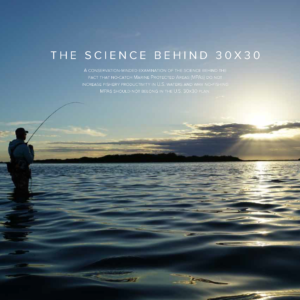
This report brings together a collection of papers, data, models, and analysis from leading fisheries scientists to show that however well-intentioned, no-take/no-fishing marine protected areas do not come without an economic and resource cost.
Executive Summary
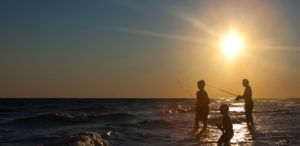
A conservation-minded examination of the science behind the fact that no-catch Marine Protected Areas (MPAs) do not increase fishery productivity in U.S. waters and why no-fishing MPAs should not belong in the U.S. 30×30 plan.
In January 2021, President Biden issued an executive order to conserve at least 30 percent of America’s land and ocean areas by 2030. It signaled the country’s desire to participate in the global 30×30 initiative. With the details not yet fully revealed, the jury remains out for the recreational-fishing community as to whether it may prove a great plus for the resource and the sport, or whether it may negatively impact both fishery productivity and result in unnecessary restrictions to public access.
In previous iterations of efforts to expand marine protected areas, the concept has been promoted as a panacea, while ignoring science to the contrary.
This report brings together a collection of papers, data, models, and analysis from leading fisheries scientists to show that however well-intentioned, no-take/no-fishing marine protected areas do not come without an economic and resource cost.
IN FACT, DATA SUPPORTS THREE SIMPLE FACTS ABOUT NO-FISHING MPAs IN U.S. WATERS:
- U.S. NO-FISHING MPAS DO NOT INCREASE FISHERIES PRODUCTIVITY. The science suggests no-fishing MPAs (at times referenced as no-take MPAs, no-catch MPAs, or fully protected MPAs) do not produce a meaningful increase in fishery productivity in the U.S. In fact, modeled effects indicate having many large, closed areas would not only complicate conservative fisheries management, but reduce its productive potential.
- PROVEN U.S. FISHERIES MANAGEMENT DOES INCREASE OVERALL FISHERIES PRODUCTIVITY. Science based fisheries management is the key to protecting ocean fishery health. NOAA’s own data on the status of fishery stocks shows the state of improving U.S. fishery health thanks to effective fisheries management. Fisheries management has rebuilt and continues to rebuild fish stocks in our oceans.
- RECREATIONAL ANGLERS SUPPORT BIODIVERSITY AND HABITAT PROTECTION. Recreational anglers understand the need to protect and conserve our fish populations and the habitat they depend on. We support 30×30 policies that are not merely aspirational, but that recognize existing management levels/actions that currently afford protections and work to identify additional conservation needs and actions through an objective, science-driven, stakeholder-engaged process to determine the appropriate level of management actions necessary to meet biodiversity conservation goals.
IN THIS REPORT, WE EXPLORE THE SCIENCE THAT SHOWS U.S. BASED NO-FISHING MPAS DO NOT INCREASE FISHERIES PRODUCTIVITY, AND THAT CURRENT FISHERIES MANAGEMENT TOOLS ARE FAR SUPERIOR AT ACHIEVING THE GOAL.
For years advocates have oversold the value of no-fishing MPAs in fishery management. This report will show that claims of MPAs being the panacea for managing fisheries are a myth and includes links to considerable scientific literature demonstrating the real cost of no-fishing MPAs to sustainable fisheries.
Our hope is to remind decision-makers of the true fisheries value of current fisheries management in the U.S. so that we can agree to a positive path forward for 30×30. So far, we are encouraged that the Biden Administration seems to understand the difference between a conservationist perspective and a preservationist perspective. If all stakeholders work together and embrace the full range of science with anglers and outdoorsmen and women to protect our wild lands and waters while also protecting the public’s reasonable access to those resources, this 30×30 initiative can yield truly positive results.
Recreational anglers, like other U.S. natural-resource users, are looking forward to a 30×30 plan that meets the needs of our nation and tackles issues such as freshwater runoff, biodiversity loss, ocean acidification, and multiple forms of pollution. We do not, however, want to see a decline in fisheries productivity. When the 55 million members of the U.S. recreational fishing community are prevented access to public waters without demonstrable scientific justification, they understandably lose trust, making it all but impossible to achieve the best 30×30 outcome possible.
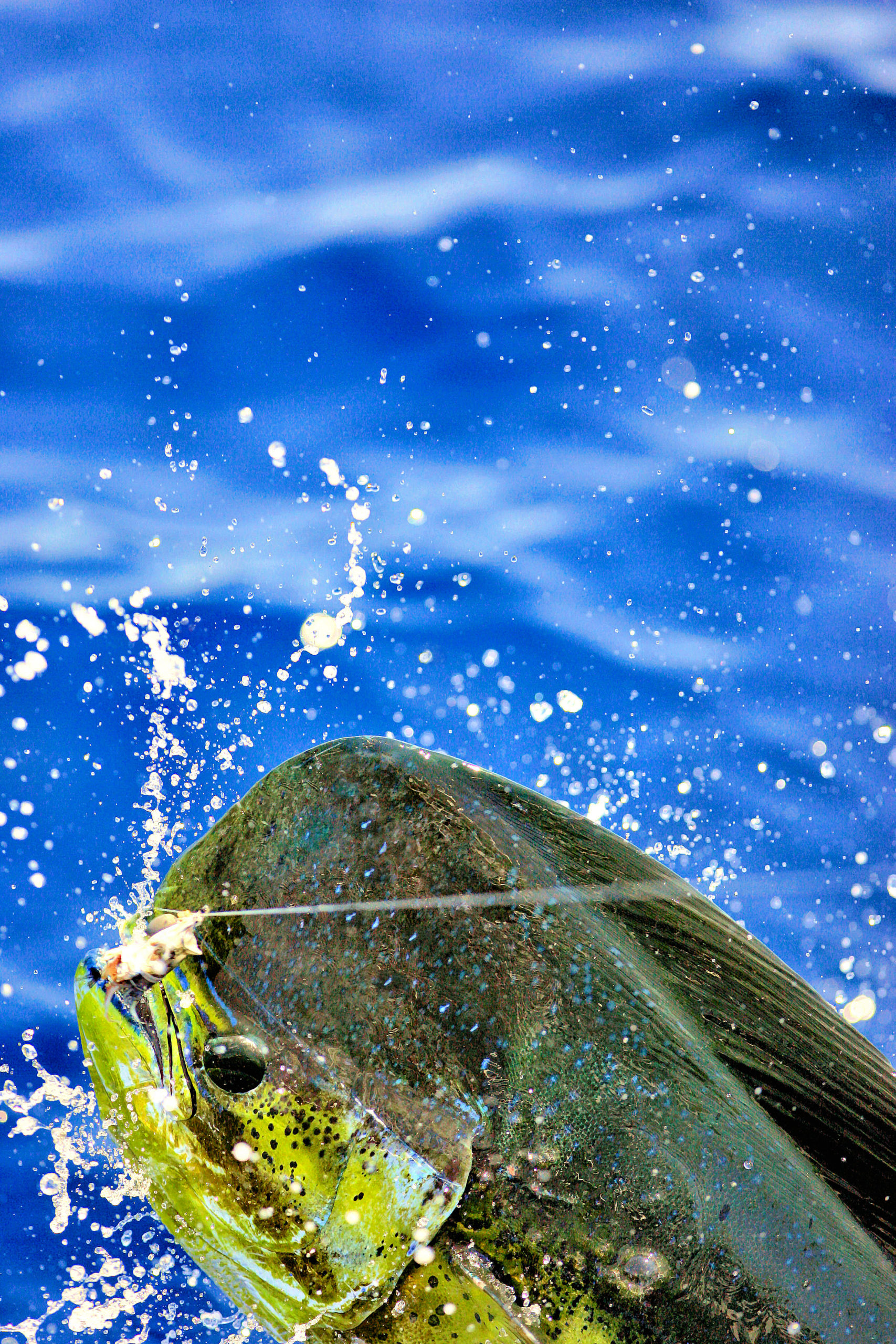
Truth v. Fiction
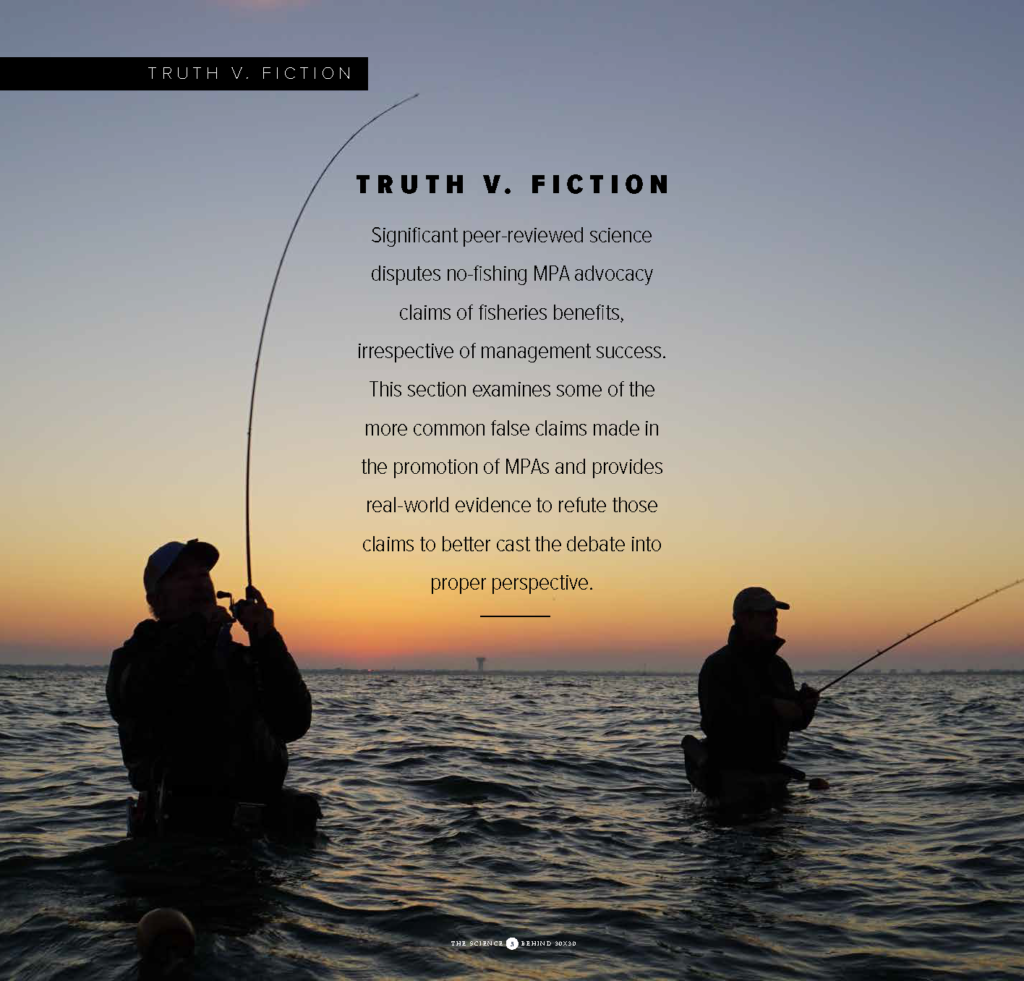
CLAIM 1 | U.S. Fisheries Are in Decline – Something Must Be Done
Among the misleading information MPA advocates use to justify no-fishing MPAs as a fishery protection tool is the implication that U.S. fisheries are in decline despite the efforts of fisheries managers. There was a time, more than 30 years ago, when this was true, but it clearly is not true today.
According to the 2019 NOAA Report to Congress, “the number of stocks on the overfishing list reached an all-time low.” In recent years, numerous U.S. saltwater fish stocks have not only remained healthy but are improving. This is due to effective fishery management practices such as fish hatcheries, size and quantity limits, catch-and-release fishing, seasonal closures, temporary area closures, gear restrictions, total allowable catch limits, limited entry, and more.
Permanent MPAs played no meaningful role in rebuilding any of the 44 fish stocks rebuilt since 2000. The NOAA report also highlights that 93% of the fish stocks in U.S. waters are no longer subject to overfishing.
U.S. FISHERIES MANAGEMENT SUCCESS
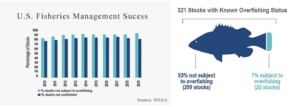
SOURCE: 2019’S ANNUAL NOAA STATUS OF U.S. FISHERIES REPORT
No-fishing MPA advocates conflate the real global decline of fisheries elsewhere with what is happening here in U.S. waters. Our current fisheries management regime is second to none and has demonstrated how to build healthy fisheries. Domestically, 30×30 should include recognition of the successful management tools developed in U.S. fisheries.
A 30×30 plan will require thoughtful implementation in the U.S., taking into account the vast differences in management on the high seas, and in countries with little effective fisheries management.
CLAIM 2 | No-Fishing MPAs Have a Track Record of Success
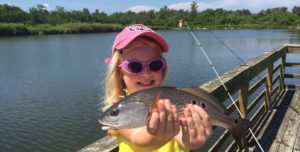
In 2003, a network of MPAs covering 800 square kilometers, roughly 20% of the Channel Islands National Marine Sanctuary in California, was established. In 2017, Daniel Ovando and a team of six other marine scientists began a study to assess the population-level conservation effects of the MPA there. The focus of the study, first published in Conservation Biology June 2021, was to look at the bigger picture MPA population level conservation effects.
While the report acknowledges the ability of MPAs to create differences between local fished and unfished areas, it concluded:
“After 14 years of MPA protection, there is no clear picture of the population-level effect of the Channel Island MPA protection network on biomass densities of targeted finfish.”
The abstract of the Ovando study goes even further by stating:
“We found no clear effect of these MPAs on mean total biomass densities at the population level.”
In the Discussion/Conclusion, the authors of the Ovando study challenge the MPA advocates and fellow marine scientists to reconsider some of their current metrics in use in order to not lose sight of the big picture in the conservation of marine fish.
“As advocacy for large networks of MPAs grows around the world, MPA scientists must directly tackle the challenge of evaluating the performance of MPAS at the population scale. Commonly employed metrics, such as spatial response ratios, may be applicable in some circumstances but are vulnerable to accuracy or misuse of population-level effects.”
The Ovando study reminds us to not just focus on the fact that no-fishing in a given area may create more fish in that specific area, but rather to understand actual broader total fish population level impacts of MPAs. The closer we look at the science from an actual MPA – whether in Australia or California – the more we understand that MPAs do not provide the fish population level benefits claimed by no-fishing MPA advocates.
In 2004, Australia implemented largescale, no-fishing MPAs on the Great Barrier Reef with the promise of improved biodiversity, fishery health and productivity. As of July 1, 2015, a study of actual results from Australia shows MPA effects are far from predicted (Fletcher et al). Ultimately, overall catches and fishery productivity did not increase, but actually decreased. The following quote from this study of that no-fishing MPA is telling:
“There was no evidence of recovery in total catch levels or any comparative improvement in catch rates within the GBR nine years after implementation. These results are not consistent with the advice to governments that the closures would have minimal initial impacts and rapidly generate benefits to fisheries in the GBR through increased juvenile recruitment and adult spillovers. Instead, the absence of evidence of recovery in catches to date currently supports an alternative hypothesis that where there is already effective fisheries management, the closing of areas to all fishing will generate reductions in overall catches similar to the percentage of the fished area that is closed.” (Fletcher Et al., 2015)
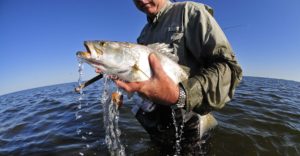
Concerns about the success of MPAs extend beyond the fact that their potential is often nowhere near what is being sold by promoters. MPAs not only do not provide the benefits being predicted, but also can as be problematic in reducing effective fisheries management. The paper Does MPA mean ‘Major Problem for Assessments’? Considering the consequences of place-based management systems covers this concern in detail. Dr. John Field serves as the program lead for the Southwest Fisheries Science Center’s Fisheries Ecology Division in support of the Pacific Fisheries Management Council.
“Marine protected areas (MPAs) have been increasingly proposed, evaluated and implemented as management tools for achieving both fisheries and conservation objectives in aquatic ecosystems. However, there is a challenge associated with the application of MPAs in marine resource management with respect to the consequences to traditional systems of monitoring and managing fisheries resources.” (Field et al, 2006)
An increasing number of scientists are concerned that picking a percentage of the ocean to close to fishing can be problematic. The series of papers Dangerous Targets, (Agardy et al.) points out how scientific evidence is sometimes overshadowed by conservation strategies MPA advocates tout, noting “[(MPA)] targets can sometimes be dangerous and counter-productive.”
CLAIM 3 | The Benefits of No-Fishing MPAs Spill Over to Adjacent Areas

The spillover effect refers to the recruitment and migration of fish from no-fishing MPAs to fishable areas. Contrary to what no-fishing MPA enthusiasts suggest, there is no scientific consensus on this issue. It depends largely on the fishery in question and how well it is being managed.
Current science indicates empirical evidence of spillover effects remains unclear in the context of whether spillover is compensatory for access lost to no-take MPAs (Manfredi Di Lorenzo, Joachim Claudet, Paolo Guidetti, 2016). Other studies suggest that MPA spillover effects may not be significant in temperate waters:
“We conclude that spillover effects are not a universal consequence of siting MPAs in temperate waters and they are related to the distribution of habitats inside and around MPAs.” (Forcada et al., 2009).
Both preservationist- and conservationist-minded scientists agree that if you create a no-fishing MPA, there will be some sedentary fish species and those with small home ranges — those with little or no migration outside the MPA — whose populations will grow within that MPA. Nevertheless, there is little scientific evidence supporting a full restriction of anglers in order to achieve similar results within an MPA.
Additionally, there remains no universal consensus in the marine-science community on the value of the spillover effect even for resident fish. That phenomenon depends on several variables such as how well the targeted fishery is being managed, larval flow and more. Again, population modeling by Carey R. Gilliard and Ray Hilborn, 2008, has shown that depending on these and other variables, no-fishing MPAs can decrease catch rates in the remaining fishable area.
Finally, no-take MPAs have little impact either inside or outside the MPA on fish that travel more widely. Le Quesne et al., 2009 concluded:
“Our model confirmed previous results: closed areas do not improve the yield of populations that are optimally managed or underexploited and, as mobility increases, optimum closure size increases.”
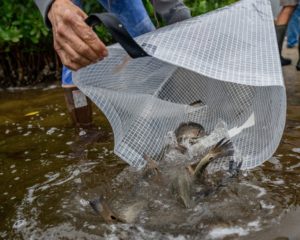
Without recreational fishing, fisheries conservation would virtually cease to exist. Through federal excise taxes on fishing equipment and motorboat fuel, fishing license fees and direct donations, anglers contribute nearly $1.5 billion annually to fund fisheries conservation and habitat restoration. These contributions drive the most successful conservation and fisheries restoration program in the world.
CLAIM 4 | No-Fishing MPAs Increase U.S. Fishery Productivity
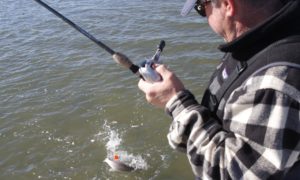
From Dr. Hilborn’s 2018 paper Are MPAs Effective?
“MPAs and area closures in general, do not reduce fishing effort, they only move it elsewhere and effort displacement has long been recognized as a result of MPA establishment or closed areas.” (Halpern et al., 2004; Hiddink et al., 2006; Greenstreet et al., 2009)
Large no-take MPAs may increase overall abundance of resident fish within MPAs, but if overfishing is not intense (the case in most U.S. fisheries), then MPAs simply move effort so the end result is more fish inside the closed area, but fewer outside unless the total harvest is also reduced.
In other words, in the U.S., no-fishing MPAs are not needed to increase fishery productivity. In an investigation of integrating marine protected areas with catch regulation, a group of scientists concluded, “only when a stock is so overfished that it is headed toward extinction does an MPA not lead to lower catches.” (See also Integrating scientific guidance into marine spatial planning published in The Royal Society for further peer reviewed science on this topic.)
It is important to note that no-fishing MPAs come at a cost to sustainably managed fisheries. “A consequence of closing an area to fishing is for the fishing effort to move elsewhere, which may have a number of undesirable consequences that in most cases remain un-analyzed.”
Even the recent paper Protecting the global ocean for biodiversity, food and climate by Sala et al., which MPA advocates are championing to promote the idea of up to 30% highly protected MPAs, disqualifies the very position of these advocates. It states, “Here we do not promote MPAs as the best fisheries management tool,” and “Notably, if fishery management were to improve globally, the food provisioning case for MPAs would diminish.”
CLAIM 5 | No-Fishing MPAs Are Grassroots-Driven

MPA advocates have spent hundreds of millions of dollars to support a pro-MPA perspective, much of it focused on misleading information. California offers an unfortunate case study. Millions of dollars were spent to influence California’s Marine Life Protection Act (MLPA), an effort that initially went into effect in 2010.
Based on data compiled by Nils Stolpe of Fishnet USA over the course of 10 years, ENGOs granted 13 million dollars just towards implementing the MLPA process in a “public- private” partnership with the state of California. That, and other money, not only supported the pro-MPA perspective but also led to a one-sided use of the science; an unfair balance of power; nonproductive angler restrictions; minimal actual fishery benefits; and massive distrust and turmoil in the California MLPA process.
MPA advocates have provided funding for coordinated marketing and lobbying efforts to educate the public and decision makers on the value of MPAs. But that educational campaign consistently fails to mention that MPAs rank well below comprehensive fisheries management in importance. Yet, this pro-MPA campaign – especially as it relates to fisheries – has misled politicians and other decision makers into thinking MPAs can most effectively fix fisheries.
Overstating the benefits of MPAs takes focus off other proven and more important measures to protect ocean fish stocks and keep them healthy. In this sense, the pro-MPA campaign again provides a negative rather than a positive impact to our fisheries.
The Economics of Recreational Fishing
Recreational fishing is one of America’s most enduring pastimes: an activity in which people of all ages can participate, enjoying opportunities to spend time in the outdoors with family and friends. But recreational fishing in our nation’s oceans is more than a chance to create memories and strengthen our connection with nature.
Saltwater recreational fishing has a huge impact on our nation’s economy and supports hundreds of thousands of jobs.
Marinas, grocery stores, restaurants, motels, lodges, tackle shops, boat dealerships, clothing manufacturers, gas stations and a host of other businesses and entities benefit from the dollars spent by recreational anglers in pursuit of their sport. Coastal communities throughout the country depend – in some cases, exclusively – on recreational fishing for their livelihoods.
$72.8 billion
Total sales generated by domestic fisheries in 2019
486,164
Jobs supported annually by recreational fishing
94%
Of all economic activity derived from the ocean was generated by the recreational sector
$1.5 billion
Total annual contributions by recreational anglers to fund fisheries conservation and habitat restoration
Each year NOAA Fisheries compiles key fisheries statistics from the previous year into an annual snapshot documenting fishing’s importance to the nation. This latest report from NOAA – Fisheries of the United States 2019 – shows that on domestic fisheries only, US anglers generated $72.8 billion in total sales supporting 486,164 jobs. In the South Atlantic and Gulf, 94% of all economic activity derived from the ocean across shared stocks was generated by the recreational sector.
Without recreational fishing, fisheries conservation would virtually cease to exist. Through federal excise taxes on fishing equipment and motorboat fuel, fishing license fees and direct donations, anglers contribute nearly $1.5 billion annually to fund fisheries conservation and habitat restoration. These contributions drive the most successful conservation and fisheries restoration program in the world.
Anglers not only pay for conservation through license fees and excise taxes, they also support conservation work by volunteering for habitat creation and restoration projects in all 50 states. As citizen scientists, they actively participate in fish tagging and tracking programs, monitor water quality, and collect other environmental data valuable to fisheries managers across the country. Anglers have spearheaded state and national programs that promote best practices among anglers to reduce fish mortality, including catch-and-release techniques and the use of circle hooks and barotrauma-reduction devices to reduce hook-and-release mortality.
Recreational fishing is founded on conservation, sustainability, and opportunity. Saltwater anglers and the recreational fishing industry they support are critical to conservation and a healthy economic environment for all Americans.
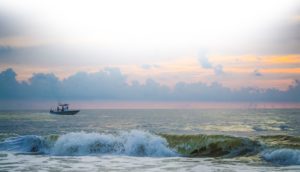
The Solutions
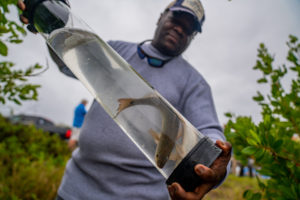
A MORE AMBITIOUS GOAL: TARGET 100% FISHERIES MANAGEMENT IN OUR OCEANS
A coast with no MPAs but rather governed by proper and sustainable fisheries management is preferable to a coast with even 50% MPA coverage, where the remaining 50% is subject to overfishing and degradation. In fact, we seek a far more ambitious target of 100% effective fisheries management, utilizing MPAs only when demonstrably appropriate and the most effective approach in conserving biodiversity, enhancing productivity, and maintaining ocean health.
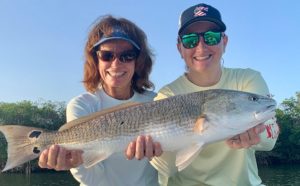
SCIENCE AND DATA MUST DEFINE THE NEED FOR INTERVENTION
If a parent or grandparent is to be denied access to take their children or grandchildren fishing, there must be real and well-defined reasons. For many, fishing is a multi-generational and multi-cultural activity that provides both a means of recreation and sustenance. The 55 million recreational anglers in the U.S. deserve more than a “just because” explanation, especially where there is so little proven benefit to the fishery.
On the other hand, if proven science shows for a given fishery that conventional management cannot work, and that limiting angler access is truly necessary to resolve a problem, then the sportfishing community would lead an effort to remove anglers from a given area until science declares the problem resolved. Examples of anglers supporting their removal from fisheries that needed help are West Coast ground fish closures, the Florida snook closure in 2011-2012 after a severe cold weather die off, closures of salmon runs in poor years, and the recent four-month Western Dry Rocks Seasonal Closure off Key West Florida to protect an important spawning area.
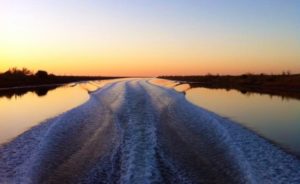
THE PUBLIC MUST BE PART OF ANY SOLUTION
The US has a variety of conservation areas on land and in the marine environment that may already meet or exceed 30×30 goals, many identified and established with the encouragement and support of anglers and hunters. A complete inventory of those areas should be established and properly accounted for before any proposal of additional MPAs. In addition to those efforts to identify and implement conservation areas, anglers and hunters have been instrumental to the creation of additional habitat to further accelerate biodiversity. In the oceans. Anglers have “gotten their feet wet and hands dirty” on projects ranging from marsh and wetland restoration to oyster reef enhancement to deep water offshore reef creation. Anglers have poured incalculable amounts of time, funding and effort into marine habitat that otherwise would never have been created or restored.
One of the hidden costs in the MPA debate is a deterioration of the grassroots passion that supports and promotes marine habitat enhancement. No-fishing MPA advocates are often guided by a preservation perspective which suggests a belief that humans should be kept separate from nature. We support the notion of conservation, which engages human participation and prioritizes using natural resources efficiently and sustainability.
Glossary of Terms
What Are MPAs?
“Marine protected areas are defined areas where human activities are managed to protect important natural or cultural resources. There are approximately 1,000 marine protected areas, or MPAs, located throughout the United States. MPAs cover about 26 percent of U.S. waters.” — NOAA
No-Fishing MPAs
The most fishing-restrictive forms of MPAs are often referred to as no-take, no-catch, strictly protected, highly protected or fully protected MPAs. The most publicized scientific work on MPA effects center around no-take MPAs. We often refer to this category of MPA as no-fishing MPAs in this document because they frequently go so far as preventing even catch-and-release fishing. Full fishing restriction MPAs have the greatest negative impact on public access to fish recreationally.
Other Forms of MPAs
There are many other types of MPAs. At times referred to multi-use MPAs, marine conservation areas, marine sanctuaries, marine parks and marine national monuments. These are the most common forms of MPAs in U.S. waters. This article does not examine the broader conservation value of multi-use MPAs in U.S. waters. We do however note that when executed appropriately, MPAs can play an important role in habitat protection while also allowing for responsible fishing access.
When Do MPAs Improve Fisheries?
In terms of fisheries improvements the study When can marine reserves improve fisheries management? best answers this question. “Their successful use requires a case-by-case understanding of the spatial structure of impacted fisheries, ecosystems and human communities. Marine reserves, together with other fishery management tools, can help achieve broad fishery and biodiversity objectives, but their use will require careful planning and evaluation.”
Reference Materials
https://aftco.com/blogs/30×30/no-catch-marine-protected-areas, https://aftco.com/blogs/30×30/saltwater-sportfishing-policy-30×30-and-mpas, https://aftco.com/blogs/30×30/30×30-overview-fishing
Policy: Marine biodiversity needs more than protection – https://www.nature.com/articles/535224a
The role of science in MPA establishment in California – https://bit.ly/3jgalq4
FOA The United Nations Food and Agriculture Organization and their studies that cover MPA’s – http://www.fao.org/fishery/sofia/en
Status of US Fish Stocks – https://www.fisheries.noaa.gov/national/population-assessments/fishery-stock-status-updates
Hunt Fish 30X30 – https://www.huntfish3030.com/
Who is Bill Shedd – https://aftco.com/pages/bill-shedd
When can Marine Reserves Improve Fisheries Management – https://www.sciencedirect.com/science/article/abs/pii/S0964569104000250
Integrating Marine Protected Areas with Catch Regulation – https://cdnsciencepub.com/doi/abs/10.1139/F05-243
Integrating Scientific Guidance into Marine Spatial Planning – https://royalsocietypublishing.org/doi/full/10.1098/rspb.2013.2252
MPA Reduce Productive Potential of Fisheries – https://danovando.github.io/dissertation/index.html
Protecting the Global Ocean for Biodiversity, Food, and Climate – https://www.nature.com/articles/s41586-021-03371-z
Large-scale expansion of no-take closures within the Great Barrier Reef has not enhanced fishery production – https://esajournals.onlinelibrary.wiley.com/doi/abs/10.1890/14-1427.1
Does MPA mean ‘Major Problem for Assessments’? Considering the consequences of place-based management systems – https://onlinelibrary.wiley.com/doi/abs/10.1111/j.1467-2979.2006.00226.x
Dangerous Targets’ revisited: Old dangers in new contexts plague marine protected areas – https://onlinelibrary.wiley.com/doi/pdf/10.1002/aqc.2675
Leading Recreational Fishing Organizations Unite to Protect a Critical Spawning Aggregation – https://igfa.org/2021/02/26/leading-recreational-fishing-organizations-unite-to-protect-a-critical-spawning-aggregation/
Seeking Consensus on Designing Marine Protected Areas: Keeping the Fishing Community Engaged – https://www.researchgate.net/publication/241851452_Seeking_Consensus_on_Designing_Marine_Protected_Areas_Keeping_the_Fishing_Community_Engaged
DFG.CA Public comments – https://www.dfg.ca.gov/marine/pdfs/finalimpact_sc/comments2.pdf
https://www.dfg.ca.gov/marine/pdfs/finalimpact_sc/comments3.pdf
MPAs will suffer, along with the rest of the ocean, as the planet warms – https://sustainablefisheries-uw.org/mpas-will-suffer-along-with-the-rest-of-the-ocean-as-the-planet-warms/
NOAA Status of Stocks 2019 – https://www.fisheries.noaa.gov/national/sustainable-fisheries/status-stocks-2019
The illusion of preservation: a global environmental argument for the local production of natural resources – https://harvardforest.fas.harvard.edu/sites/default/files/Berlik_JBiogeography_2002.pdf
Can the United States have its fish and eat it too? – https://static1.squarespace.com/static/577ec4f64402433a0706c1fc/t/58a61d11a5790a1e4d50d0f2/1487281427918/Helvey+et+al.+2017+Marine+Policy+Conservation+Leakage.pdf
Spillover from marine protected areas to adjacent fisheries has an ecological and a fishery component – https://www.sciencedirect.com/science/article/abs/pii/S1617138116300255?via%3Dihub
Spillover from marine protected areas to adjacent fisheries has an ecological and a fishery component – https://www.researchgate.net/publication/237152362_Effects_of_habitat_on_spillover_from_marine_protected_areas_to_artisanal_fisheries
Is catch-and-release recreational angling compatible with no-take marine protected areas? – https://www.sciencedirect.com/science/article/abs/pii/S096456910600038X
Modeling no-take marine reserves in regulated fisheries: assessing the role of larval dispersal – https://cdnsciencepub.com/doi/10.1139/F08-150
Managing mobile species with MPAs: the effects of mobility, larval dispersal, and fishing mortality on closure size – https://academic.oup.com/icesjms/article/66/1/122/634877
Are MPA’s Effective? – https://academic.oup.com/icesjms/article/75/3/1160/4098822
Confounding Effects of the Export of Production and the Displacement of Fishing Effort from Marine Reserves – https://esajournals.onlinelibrary.wiley.com/doi/abs/10.1890/03-5136
Using MPAs to address regional-scale ecological objectives in the North Sea: modelling the effects of fishing effort displacement – https://academic.oup.com/icesjms/article/66/1/90/635230
Predicting the effects of area closures and fishing effort restrictions on the production, biomass, and species richness of benthic invertebrate communities – https://academic.oup.com/icesjms/article/63/5/822/662058
A Review of California’s Artificial Reefs – https://escholarship.org/content/qt8w48r4n7/qt8w48r4n7_noSplash_500e0606096889ed11959804bd805dbd.pdf?t=qcjjlc
Conserving and Restoring America the Beautiful 2021 Biden Report – https://www.doi.gov/sites/doi.gov/files/report-conserving-and-restoring-america-the-beautiful-2021.pdf
25 Examples of Artificial Reef Studies – https://aftco.com/pages/resources-on-artificial-reefs









